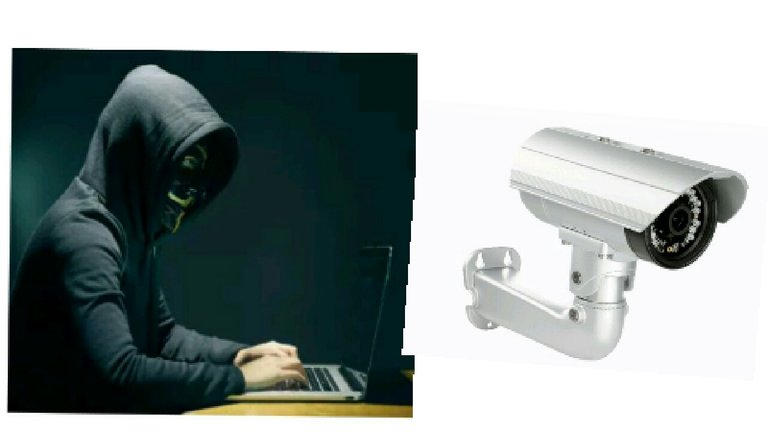
Hello my fellow steemian, this is my second post on steemit, am very happy to be here I just want to share to you guys on how to protect IP cameras from black hat hackers.
IP cameras are just unprotected to cyber attacks as anyother networked device.
Here are steps that will eliminate network security weaknesses.
.
IP cameras give black hat hackers a particularly easy portal into the system.
In a networked physical security environment, each embedded device is a unique computer
complete with IP address, passwords, security configuration
settings and vulnerabilities. Poorly configured devices can
provide a hacker with the chance to intrude into the
network where they can alter or collect data, change
settings, take control of the system or, ultimately, defeat a
physical security system and render the facility unprotected.
Of the many devices prone to attack, IP
cameras offer a particularly easy portal into the system. To
attackers, a camera is simply another networked device, and
therefore another potential attack point — one with which
they have had some success recently. IP cameras can become
unprotected due to human factors (mis-configuration, user
error, etc.) or the technology (design flaws, firmware).
Another weakness of IP cameras is the set and
forget mindset commonly practiced by the installing dealer
as well as the end user. To help avoid the practice, at a
minimum the following three areas should be compulsory to
address. Neglecting to change these can leave devices
prone to attackers who are well aware of the tendency to
leave settings unchanged. The all-access username is
generally admin and the default password is often just
(1234)
There are also Web sites where default passwords
for most IP cameras both consumer and commercial grade
are publicly listed.
Other security settings, like encryption or remote
access, are often set to a less secure state by default to
ease “plug-and-play” installation. But even for professional
installations, security levels for virus scans or firewalls are
set at a lower level so as not to affect the setup and force
a reset to the less secure standard level.
Changing passwords cannot usually be done during setup
when it would be most convenient, but rather must be done
after the fact. For a more secure system, change passwords
as soon as possible. Hackers know that a lot of people do
not replace their default passwords on their network devices to another one
Network Segmentation: Avoid opening IP video cameras
to the Internet or any other external networks, when opening IP video cameras to public it make it easier for an attacker to find them.
Networks should have internal perimeters that align with
their functional areas, and reflect the data sensitivity and
access requirements for those areas. Many breaches
originate in one segment of the network, where attackers
find entry easiest, and then propagate to other unrelated
segments of the network as the attack progresses.
Security is not the only issue that benefits from
proper network segmentation. The ability to contain network
problems, improve performance and reduce congestion are all
key resulting products. Network segmentation should be
continually managed. Hackers constantly attempt to find new
openings as old flaws are fixed, so manufacturers and others
are always working on making more secure products and
quickly developing patches.
Still, it’s critical to recognize that it's given ever-evolving
methods and technologies used, no one can guarantee that all
potential breaches will be avoided. It is paramount that
cameras and the surveillance system network are shielded
and separate from systems and networks where sensitive
data is kept. This will help prevent IP cameras from
becoming an “open door” for hackers to access those
systems.
Firmware Updates: Many cameras will be unprotected
because of outdated firmware.Hackers have been
successful at finding and exploiting bugs in camera software
that allow them to bypass authentication and access the
device. In many cases, the manufacturer had already
identified and provided a patch, but the firmware hadn’t been
updated.
End users often don’t know how to update their devices, don’t think to do it or lack the time to update their
firmware. In some instances, the end user (or installing
integrator) can register the cameras with the manufacturer
to receive firmware updates. Also, check the manufacturer’s
Web site for firmware updates.
Firstly, this is a good write up but isn't an interesting read with the format of its arrangement. I have found the following posts for your use, please go through them and ensure to make your post look more attractive and easy to read.
https://steemit.com/writing/@minion/professional-tutorial-for-post-formatting-both-for-beginners-and-advanced-users
https://steemkr.com/steemit/@sandalphon/tips-on-formatting-and-styling-your-post-on-steemit
https://steemit.com/steem-help/@vitkolesnik/how-to-make-your-steemit-posts-look-beautiful-a-quick-guide
Looking forward to reading from you soonest.
Keep Steeming!